
Recognition:
"Cut it out" (IJEA, Best of SNO)

Recognition:
“Real Warriors: Winter spirit week” (IJEA)


MCHS students and school deal with the issue of attendance by adjusting the back to school rules and creating a more welcoming climate
January 30, 2023
The student lands themselves in the dean’s office again. “Why?” The student aks the dean. He fails to see the purpose in attending their classes, and it has landed him in this seat on multiple occasions. The dean tries to convince the student of the important safety reasons to be in class instead of ditching or wandering the halls aimlessly. The student crosses their arms and seems not to care as the dean hands them another detention for the endless cuts, tardies, and truancies on their attendance record.
The student walks out of the office with a pass to report back to class but, instead, finds some comfortable seating around the school and skips their next class. The cycle begins again as their grades drop and attendance gets flagged.
Though this cycle has improved this year, during the 2021-22 school year, occurrences like these were all too common, seen as the effects of the first full year of in-person learning returning from the COVID-19 pandemic. Students had to adjust to being back in the school building, attendance and behavioral issues occurred as students dealt with the school environment and rules again.
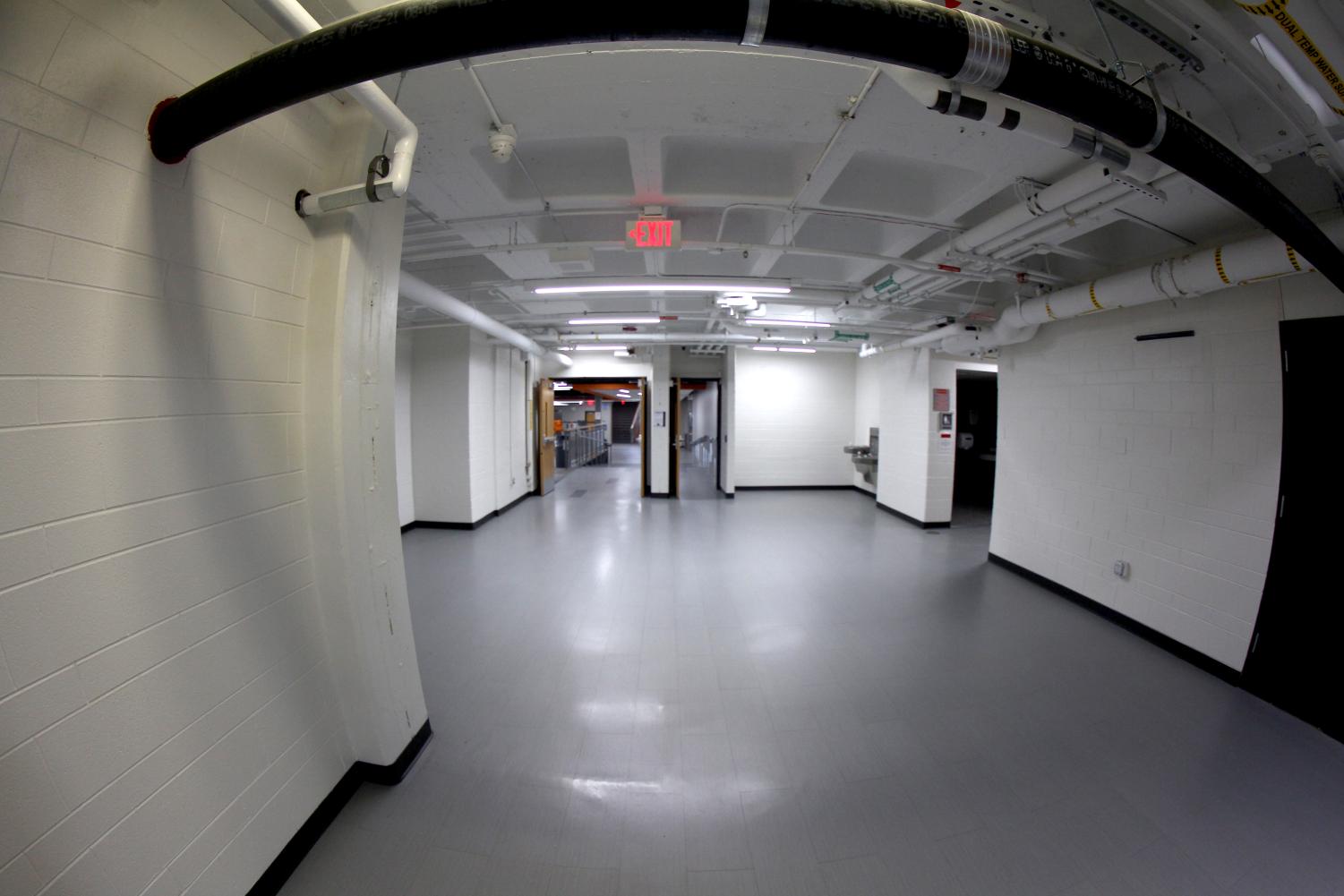
The halls of MCHS’s Upper Campus have been clearer since administration began a more concentrated effort to reduce cuts and wayward students, especially while “flexing” during blended classes.
The Illinois Report Card noted McHenry Community High School’s problem with “Chronic Absenteeism” during the 2021-22 school year. The district has focused on the attendance issue because of the connection between lack of attendance, grades and its impact on the school.
According to the report, “Illinois law defines ‘chronic absentee’ as a student who misses 10 percent of school days within an academic year with or without a valid excuse. That’s 18 days of an average 180-day school year.” Even when a student has an excused absence for something like illness or caring for a family member, they still need daily class time in order to truly succeed. Students who are more often absent are at more of a risk of academic issues and social problems.
Upper Campus Security Personnel Lauren Traynor catches students cutting classes every day, whether they are wandering the halls, sitting around the building or trying to blend into lunch periods.
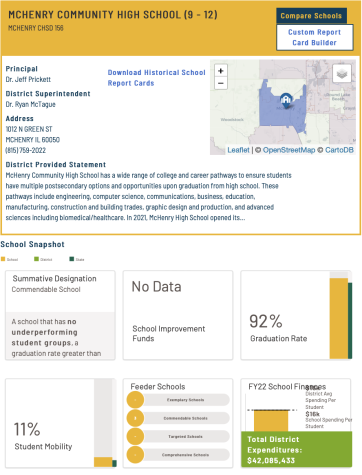
“It’s dangerous in the sense that people don’t know exactly where [students] are,” said Traynor. “If there’s an emergency situation and you’re not with your class, you could be literally anywhere … That creates confusion and delay.”
This year, MCHS has implemented new programs such as the MyHomework and Minga apps to help better manage student’s attendance, hall passes, and IDs. These systems have helped the school keep track of which students are in the hallways in an effort to keep individuals out of trouble. It also helps with monitoring off-campus lunch procedures by checking IDs in and out the building.
“Those [apps] are really helpful,” said Traynor. “It tells us when somebody has a blended class. It identifies that the class can be blended, but it’s not necessarily specific to that day. So there is a need to double check attendance sometimes.”
Security at MCHS works hard to keep students safe and accounted for in the building. They work to bring students back to class and discuss the importance of being in class in order to succeed.
“Showing up is half the battle,” said Traynor. “Do some of the work and just pass the class if that’s all you can muster is passing it.”
Students cut classes for many reasons. Many students find themselves stressed out or don’t see the purpose in attending classes at all. Anxiety over tests and projects also make the classroom not a delightful place to be all the time.
“There’s many reasons,” said Traynor. “I think they don’t see the value in it. Personally, I think you have to value being there, or you don’t. They [students] don’t see the purpose and for whatever reason they’re not finding that [class] to be a useful use of their time.”
Security, administration and staff spend many hours tracking student attendance. Attendance personnel at MCHS work between different systems to correct errors and figure out individual student attendance throughout each day.
“I just want everybody to go to class, get their education and go on to be successful adults, whatever that measure of success looks like to them,” Traynor comments.
Hilary Agnello is the Dean of Students who tracks truancy at MCHS. She says cuts appear when a student is not present in a classroom they are supposed to attend. Students are then called down to meet with an Attendance Interventionist for a conference, which explains the consequences, explores the student’s justification and discusses the reasons or possible errors.
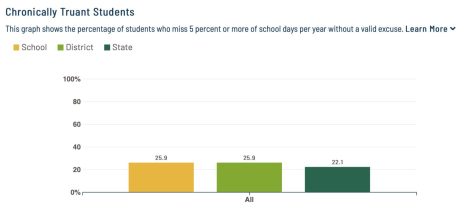
“I think they [students] need to be held accountable,” said Candace Johnson, an attendance interventionist, “and I think they need to understand we care and want them in class. You must be in class to get good grades, and that’s ultimately the goal for them to do wel.”
Many hours are put into tracking student attendance. Attendance personnel at MCHS work between different systems to correct errors and figure out individual student attendance throughout each day.
“We try to do everything we can to encourage the kids to go to class,” said Johnson. “We improve attendance by talking to the kids, trying to work with them, and figuring out if there’s any help we can give them. There’s a whole bunch of staff in place to help a child succeed, but they have to want to succeed themselves.”
Consequences escalate for students who cut classes consistently. Consequences can be detentions, extended detentions, in-school suspensions, out-of-school suspensions and sometimes removal from the building. In some extreme cases students may be issued trespassing warnings and police department tickets.
“If I can’t trust you to go to your class,” Agnello said, “I want to put you in one room where I know where you’re at, because my job really is to keep people safe. If I can’t account for where you guys are, I’m not doing my job. To the point where the worst case scenarios of kids who continue to cut without a justified reason or error, if I catch them cutting again and I’m radioed, I send them home. I just say I can’t trust you to be in the building,”
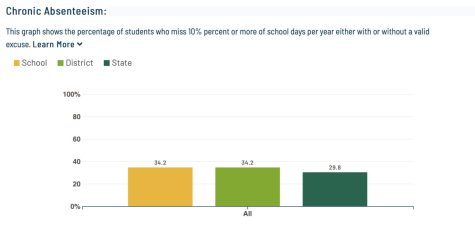
Parents and guardians are notified when a child comes in for an attendance conference. This alerts them to the issue along with detention information and the consequences in response to the student’s cuts and tardies.
“There’s a lot of detentions,” said Johnson, “but there’s also a lot of negotiating because at the end of the day, we want the kids to learn and to be their best self … We just hope that they succeed.”
The processes and systems in place are not perfect, but it is a start to help manage attendance and maintain students safety within the building.
“I don’t think it’s a perfect process,” said Agnello, “but I think we have to do something in order to address as many individual cuts as possible because when there’s so many class cuts, academics plummet,” said Agnello. “We’re trying to put more accountability on the kids to be able to control where they are going without us … But not everybody does it the right way and they take advantage of it.”
Some staff called the school year 2021-2022 class cuts “brutal.” Compared to last year the hallways seem to be more controlled, and the situation seems to be improving at MCHS.
“We had over 2,000 class cuts in January alone and 1,800 kids in the building,” Agnello said, “and what ended up happening is the grades across the board just plummeted. I think having such a hard year when it came to class cuts and discipline, we were looking at anything to help. We had kids running away from security guards, cutting all over the place, kids sleeping in the hallways and bringing a pillow. It was chaos. It was not what a school is supposed to be. When I do my hallway sweeps, It looks way better now. When kids are in the hallways, they look like they’re learning.”
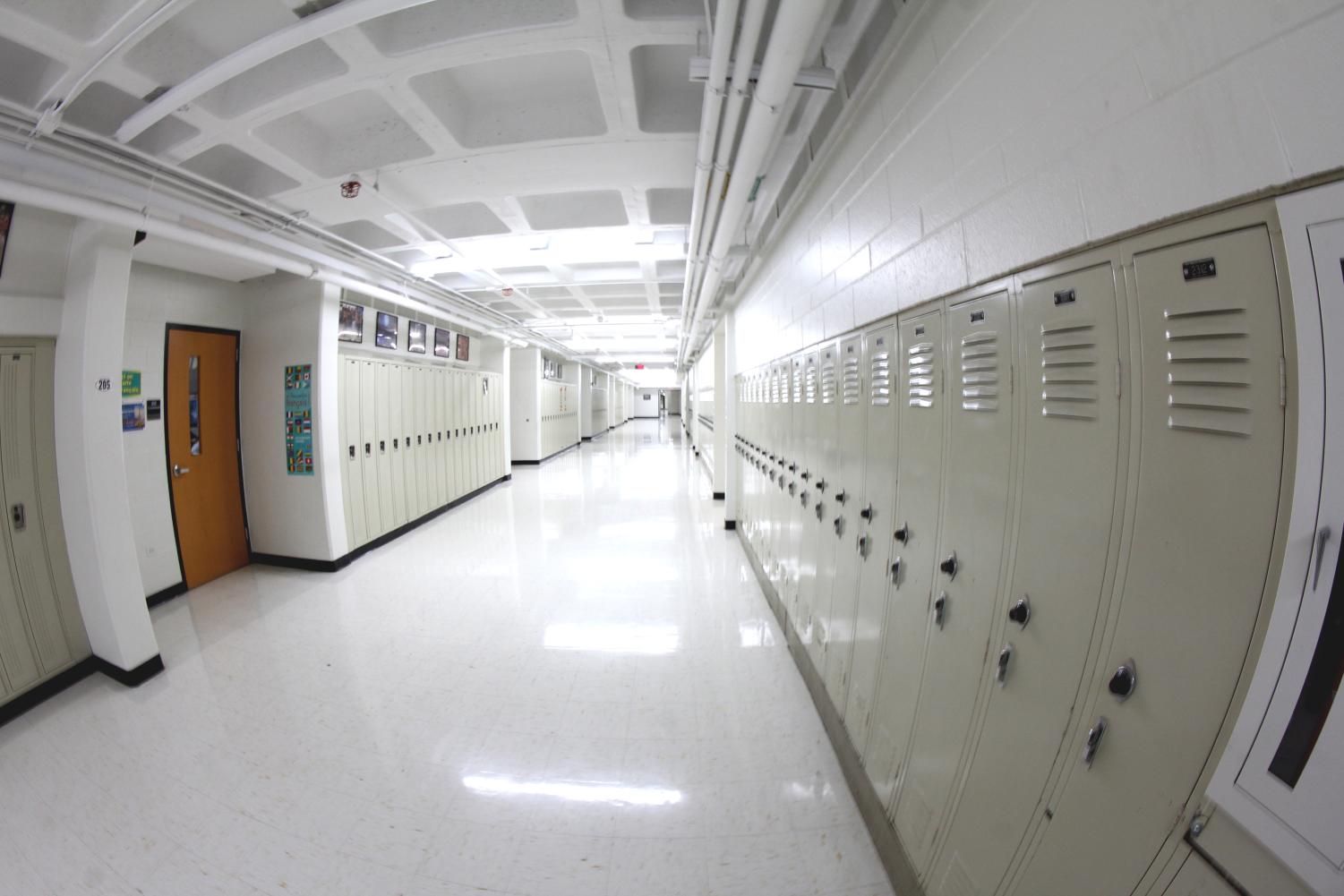
The halls of MCHS’s Upper Campus have been clearer since administration began a more concentrated effort to reduce cuts and wayward students, especially while “flexing” during blended classes.
MCHS is working to improve student attendance and support students with rewards and attendance incentives. Instead of detentions, more natural consequences are trying to be implemented. More people have been added to staff to handle attendance.
“Last year,” Agnello explained, “there were so many [cuts] and so few of us. that we weren’t able to catch somebody until they got like 12 and by then we’ve lost them.”
Counselors, social workers, student deans, attendance interventionists, the principal and others at MCHS are working to be more proactive and discover more humanistically what is going on with each individual student to promote better attendance.
“School’s not for everyone,” Agnello admitted. “It’s not, so there’s a lot of programs out there. We try to find ways to get them in the direction where they feel more motivated. Kids want to get involved with something when they feel connected to it. When kids don’t feel connected to the teachers and to each other, why would they want to be here? When kids are involved in stuff, they do better. They come to school, and they do better here.”
Students are promoted to get involved in the various clubs, sports, and resources at MCHS to support and improve their enjoyment of school.
“If you’re gonna be here, make the best out of it. I encourage kids to get involved with the programs at school. The more fun you have in school, the more likely you’re going to be to succeed,” said Johnson. “You can fight the system or join the system, but ultimately, you’re going to have a good time and get smarter for it. It should be a great experience.”
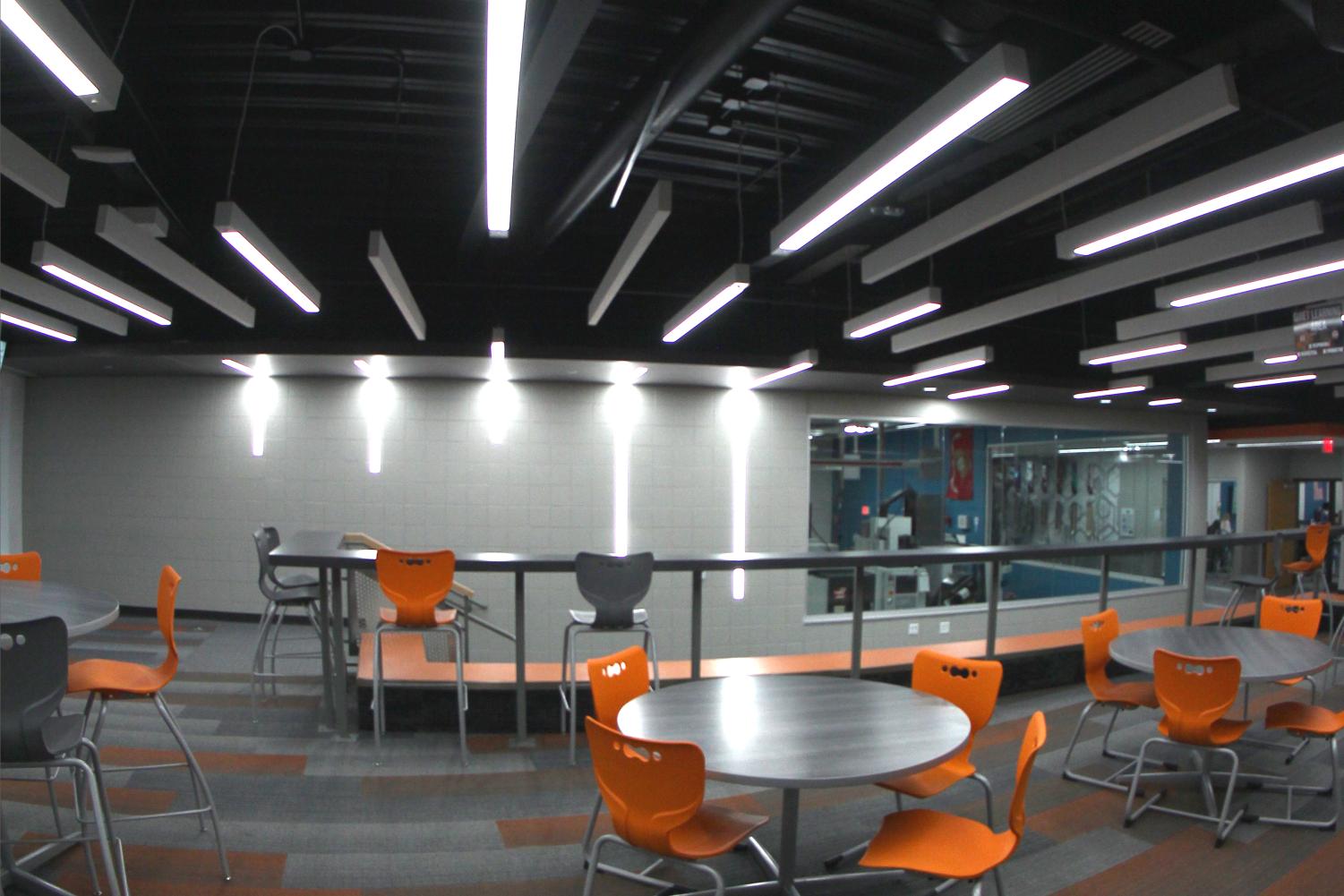
The halls of MCHS’s Upper Campus have been clearer since administration began a more concentrated effort to reduce cuts and wayward students, especially while “flexing” during blended classes.
While MCHS has faced many challenges and changes over the past couple of years, the school continues to improve and find better ways to motivate students.
“What we struggle with as a disciplinary and school standpoint,” Agnello said, “is once the shift went to COVID and everything went online, we inadvertently almost said being in a classroom with a teacher is not necessary. Then we turned back around and said no, you have to be here. We’re at that conundrum — how do we show that the learning in the classroom is better, when all you guys know is go look at your grade? You’re taught to earn a grade.”
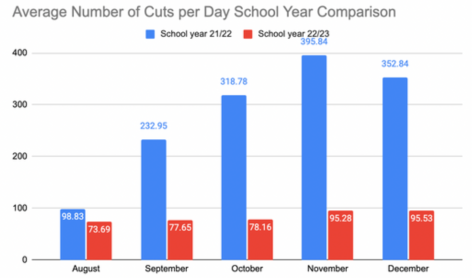
COVID has had many lasting effects on the educational system, and it is seen in the way students learn in today’s world.
“Last year,” Agnello added, “I think [students] skipped a lot because coming back to structure, from online learning, seemed pointless. Kids need to see the reasoning behind things, and the reasoning was removed. COVID removed it. They were desperate to have connections with each other again and forced it in groups in the hallways with justification to do it later online.”
Blended learning classes complicated this new learning culture by creating safety and learning issues. Once a letter grade is earned, students are free, with teacher approval, to learn outside of the classroom that day. This can prevent students from making the connections or having the learning experience offered in a traditional classroom.
“High school is the last opportunity we have as a society to force you to get to know other people,” Agnello said, “to force you in a room with people who are not like you and we’re losing that. So long as you have a letter grade you don’t have to be in that classroom. I look at it from a philosophical standpoint, educationally I understand it … but I always default to what did you leave high school with and it’s not going to be just the grade. It’s always the connection with a teacher to a peer or an experience. I don’t want to see us lose out on these and lose out on the ability to hear each other’s voices.”
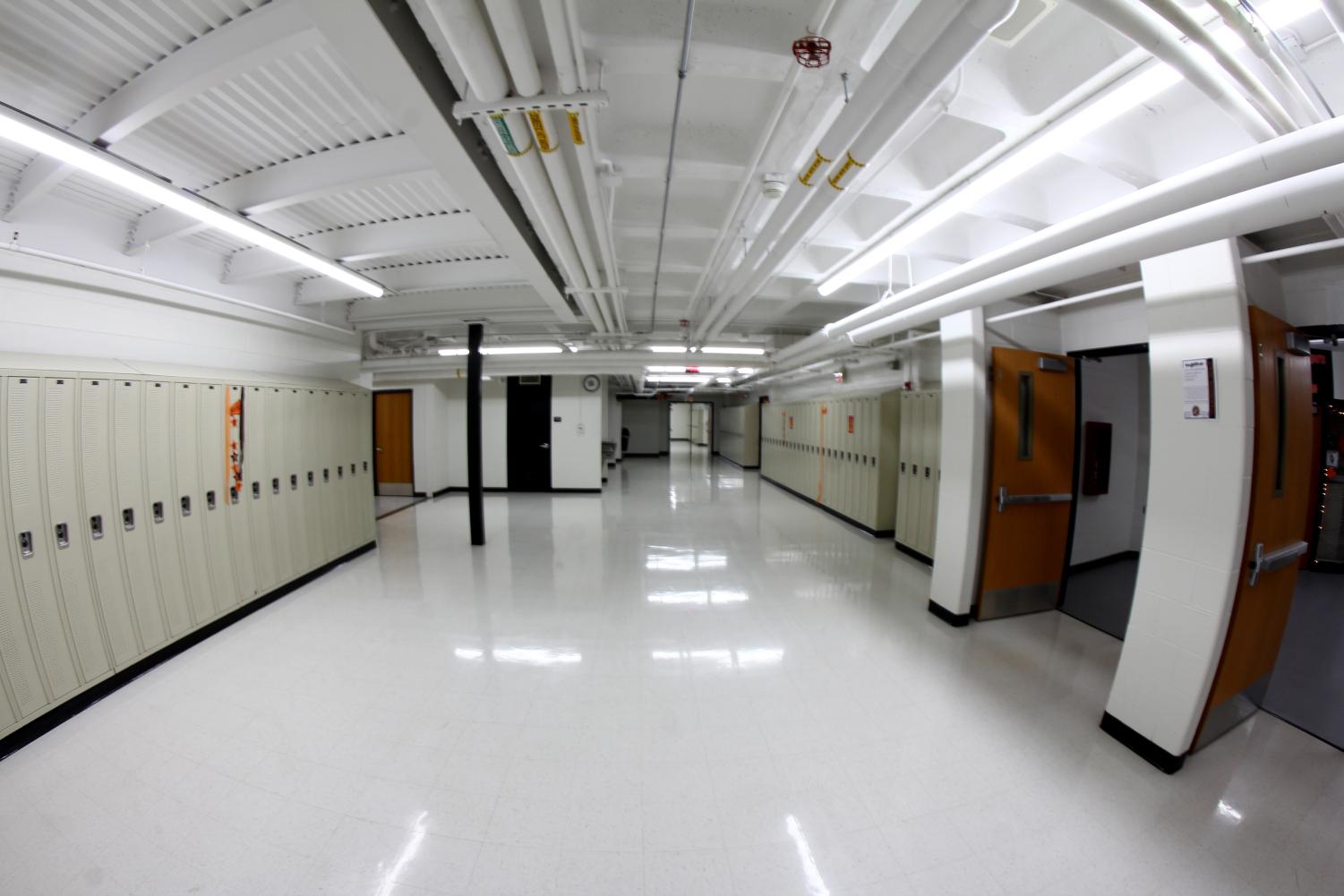
The halls of MCHS’s Upper Campus have been clearer since administration began a more concentrated effort to reduce cuts and wayward students, especially while “flexing” during blended classes.
Many students understand the repercussions of not attending classes or school. It often leaves students behind and further stressed out.
“Sometimes it’s fun,” commented one student who preferred to remain anonymous. “Sometimes I just can’t be in a class. It makes me seriously want to cry. Or class discussions, I don’t like talking. A lot of teachers seem like they have no interest in their jobs. I don’t like being around those other teachers.”
Teenagers often struggle with outside pressures and balancing emotions with others’ opinions.
“I do like the school itself. It’s more the people in it,” said junior Emma Garrett. “It’s really the students and the environment that they make it. I think MCHS has amazing programs, amazing opportunities. It’s the students that almost bring it down.”
Students expressed how participating in class can be difficult because other students are rude and cause embarrassment on those who do so.
“You can do the simplest thing and be judged for it,” said sophomore Natalie Schlotfeldt.
Students are in school for much of their daily lives, spending each week day in and out in the same building surrounded by their peers.
“It’s hard not to care what others think,” comments Garrett. “We are here for four years. This is the environment that we spend seven hours a day, five days a week, for four years of our lives.Your peers may mean nothing to you in the future, but right now they’re your everything.”
Some students have a hard time with the school’s strictness around tardies and cuts. It makes them feel stressed out. They also feel ignored because they have reasons they feel are not addressed and instead are punished.
“I remember being taken down to the office about my tardies,” said Schlotfeldt, “but the only reason I’m getting them is because of trying to go to the bathroom or trying to get to class across the school … I feel like [teachers] should ask why you’re late and hear if you have a reasonable explanation for it. I feel like there needs to be a better system for it.”
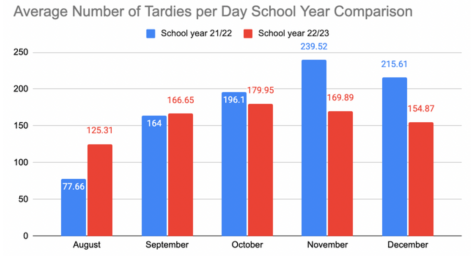
Garrett dealt with many attendance issues and other school violations in her freshman year of high school. She had an ISS, tickets and several detentions.
“Nobody had any idea that I had a whole home life situation going on,” said Garrett. “Until the dean and principal reached out to my mother, … then I felt understood and heard. My teachers had more reasonable expectations for me. Until I did that and spoke to my teachers about what I was going through, I felt unheard, unseen, and not a part of this community. Now, as a junior, I think I’m definitely putting myself forward.”
Garrett also is involved in several sports which encourages her to attend school and helps connect her to her peers and the school itself.
“There’s something so divine about being a Warrior,” said Garrett. “There’s so many people who honestly I would have found weird or not in the normal societal box, and then they were on my wrestling team. Now I see them like family … they’re my team. Just that sport alone has completely changed my mindset on a whole room of 60 people.”
Vanessa Etherton was struggling with attending school because of her low mental health and lack of motivation.
“I came to school one day halfway through the day, and I literally couldn’t get out of the car,” said Etherton. “I did not want to enter the school. It was so bad.”
Her mother entered the school and was able to retrieve a teacher to help support Etherton.
“He told me that I could stay in the Chill Zone all day, and talk to my counselors about what was going on,” said Etherton. “They helped me find a therapist, and I love her so much now. I feel like students should be more open about their feelings, because some teachers do help.”
Much of attending school is about creating good habits, and students have to put forth the effort.
“It takes 21 days to create a habit,” said Garrett, “so if you go to school for 21 days, your brain is going to have that habit, and you’re going to be mentally prepared. For people who don’t come to school and don’t show up, it’s just forever going to be this hard struggle.
Sophomore Alivia Jacobo has cut her challenging courses because she tends to struggle in the classroom environment, and she has a low grade in the class.
“In class, I feel like I don’t learn anything,” said Jacobo. “I leave to go talk to friends, and I have a better day that way. I just like to leave because my problems go away that way.”
Some students find it hard to attend school because of lack of motivation and fulfillment of important information as students stress the void they feel over not learning important information to them.
“Personally I don’t believe in motivation,” said Garret. “I think it’s about self-discipline. Nobody’s gonna be motivated all the time, that’s an unrealistic expectation … but it’s a matter of are you gonna make yourself do it? Are you going to start creating that habit?”t
Senior Justin Link comments he has a connection to his teacher that makes the class more enjoyable and a fun classroom environment that almost every student wants to attend.
“She’s just there for us,” said Link. “If we need anything, she’s got us.
The students who show up to school and put forth effort to make their experience great tend to enjoy their high school experience.
“I feel bonded to any teacher that I want to at school,” said Garrett. “It’s the effort you put in and how you take advantage of the resources and opportunities you have. If you cut, you’re gonna have consequences, but we have opportunities to go to the Chill Zone, social workers, psychologists, and others you can go talk to. I think we just need to take advantage of everything we have here.”
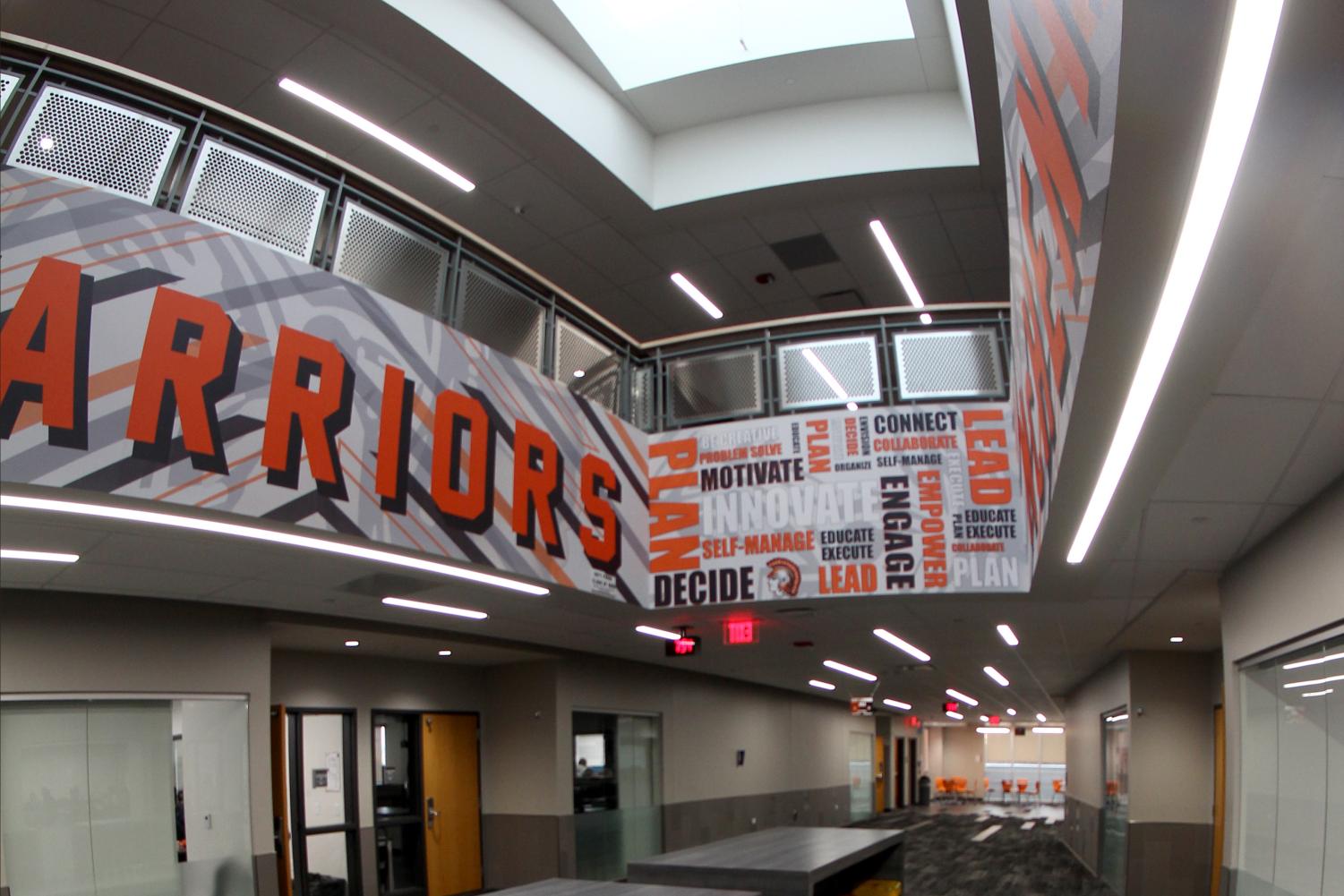
The halls of MCHS’s Upper Campus have been clearer since administration began a more concentrated effort to reduce cuts and wayward students, especially while “flexing” during blended classes.
MCHS’s psychologist Eric Born helped administer a school climate survey from Panorama Education in the fall of 2022, which reveals the climate and culture at MCHS.
“When you’re at high school,” Born said, “one of the main reasons you [students] don’t come to school is the climate, culture, and belongingness. So unless we address this, we’re not going to see an improvement in attendance because some of those other factors are beyond our control.”
Looking at the data helps to paint a picture of why students cut classes so much last year. Born, MCHS school psychologist, used a problem solving model to look at the evidence, student voice and develop a hypothesis to find a solution or plan to address the problem.
“I saw there were opportunities and problems,” Born started. “Let’s address that and make it better. We don’t have time to wait and fail… and then we start supporting you. We need to survey you and ask questions beforehand. I’m gonna do more than what I’m supposed to do for my job and carve it into something more in the future because that’s where I think education is headed.
The responses to the student survey reveals 32% of students feel like they are valued members of our school community, and the school climate was 50% rated favorable by students. Evidence also showed school belonging ratings decreasing with groups of students depending on their attendance, a correlation of less attendance related to a lower feeling of belonging, significantly.
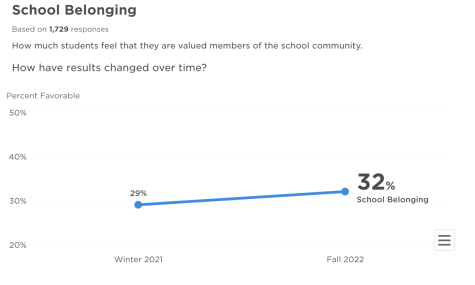
“We have to be invested to make this an enticing place so that students that have challenges come here because they see value in [school], and then they connect it to their future, because it’s worth it,” said Born.
The teacher-student relationships were reported favorable by 41%, decreasing from the last survey taken in the spring of the 2022 school year.
“If you ask teachers how many of them received mental health or social emotional training in school,” said Born, “it’s next to nothing. But those are the biggest challenges that [students] are facing. It’s depression, feeling overwhelmed, balancing life, it’s still being a kid while being involved, thinking about your future, getting along with others, your place in the world, identity, and on. We need to support teachers in that.”
Relationships were hard to form along with learning throughout the COVID pandemic and after.
“There’s a lot of pressure on the teachers to make in-class learning feel better than online learning,” said Angello. “It’s hard to force [students] back into a classroom, because we have so many other tools that make it available to them from an educational standpoint, out of the classroom.”
Students’ voices and expressions become important to understand the problems facing schools’ climate, culture, and environment to make it a place students want to attend.
“If you look at education,” Born added, “this is a service. It is not a business. We’re here to provide a service to teach skills, create a community, and a good climate. Understanding how to look at evidence and find those kids [struggling] … it’s a change, and it’s not gonna happen overnight.”
The survey continued to show a correlation between students who had 95% or better attendance having more favorable ratings on their school belonging, school climate, school safety, and better teacher student relationships. These ratings significantly decreased for students who had a lower attendance percentage.
“They [students] are not connected,” said Born.“So if you address that, I think you’ll see apathy decrease, and their connection and their desire to do better will directly improve. I think it’s being able to set aside part of the curriculum and create human connections with people and get to know them.”
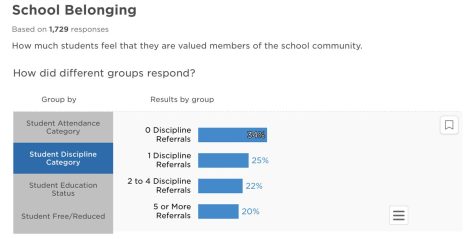
Student attendance is an issue that causes many reciprocations for the students.
“It’s our job to make sure that you’re safe, connected, and supported,” Born added. “Everybody kind of plays a different part. The attendance piece, when we know you’re not here, you’re not getting the experience. You’re maybe not creating those connections and you’re not learning. So how can we prepare you for your future, it’s a big thing.”
The culture and community built at an individual school shapes the experience those inside of it feel and the connection and effort a person contributes.
“It’s everything, I think that’s what we should be known for,” said Born. “That should be the core of what we do here. If we are not creating a connection, having a climate where students feel welcome and supported, you’re not gonna learn. Where you feel like you don’t like working, you’re not really gonna want to stick around and put forth your best effort.”
Many of the staff members at MCHS were former students of the school district.
“It’s an unusually high number of staff members who went through this district who now work here,” said Born. “I think that is telling evidence, I think that’s a really good thing that people feel or have a fondness or affinity for the school, and they want to work here in this community. I think that’s a really good thing.”
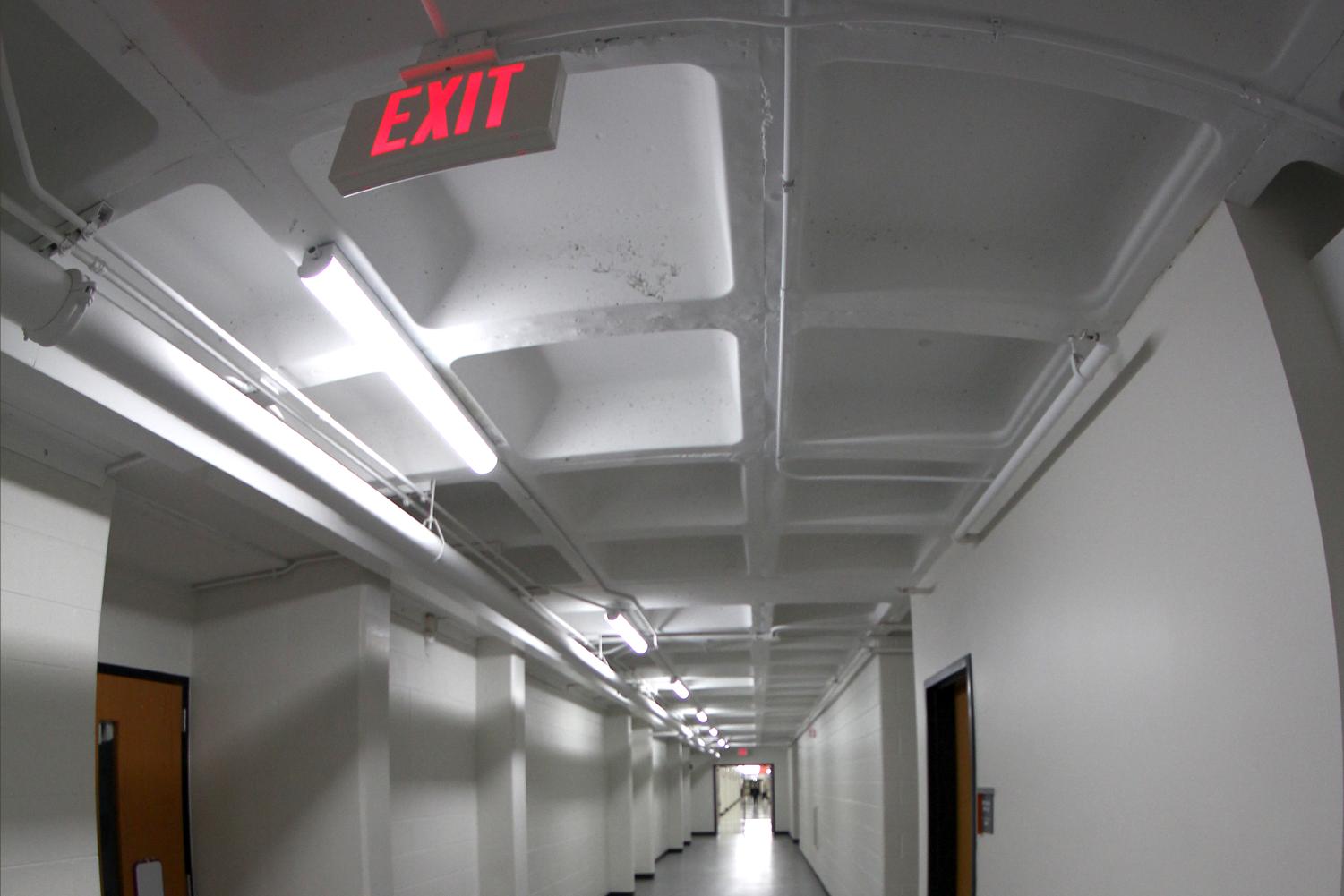
The halls of MCHS’s Upper Campus have been clearer since administration began a more concentrated effort to reduce cuts and wayward students, especially while “flexing” during blended classes.
It takes a while, but the student who cut classes before finally understands the purpose of attending class and the importance of learning in his high school career. While his grades fell as he had poor attendance in class, the student understands it’s never too late if he is willing to put the work in and show up. He works with his teachers and, with help from counselors at MCHS, the student gets the support to be able to get their grades back up and be back on track to finish out their classes — plus is gaining a lot more learning and connections out of his school experience.

